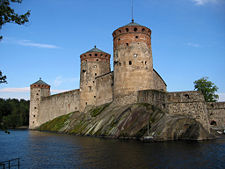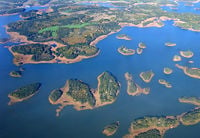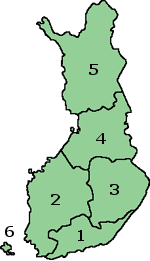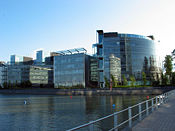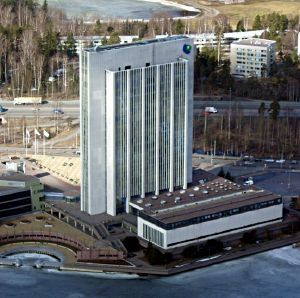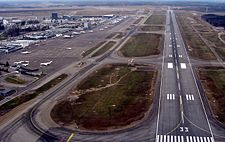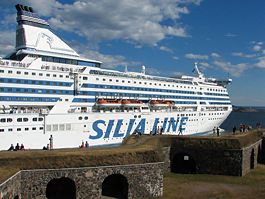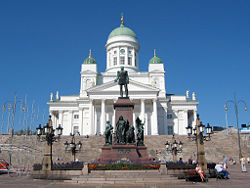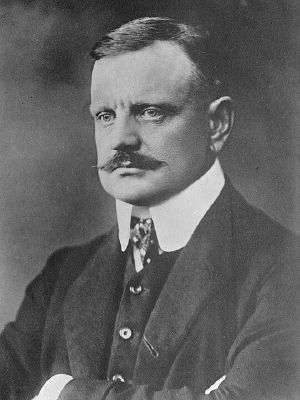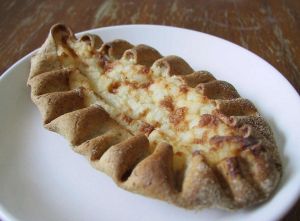Finland
| Suomen tasavalta Republiken Finland Republic of Finland | |||||
| |||||
| Motto: none1 | |||||
| Anthem: Maamme "Our Land" | |||||
|
Location of Finland (dark orange) – in the European Union (light orange) | |||||
| Capital (and largest city) |
60°10′N 24°56′E | ||||
| Official languages | Finnish, Swedish | ||||
|---|---|---|---|---|---|
| Government | Parliamentary democracy2 | ||||
| - President | Tarja Halonen | ||||
| - Prime Minister | Matti Vanhanen | ||||
| Independence | from Bolshevist Russia | ||||
| - Autonomy | March 29, 1809 | ||||
| - Declared | December 6, 1917 | ||||
| - Recognised | January 3, 1918 | ||||
| Accession to EU | January 1, 1995 | ||||
| Area | |||||
| - Total | 338,145 km² (65th) 130,558 sq mi | ||||
| - Water (%) | 9.4 | ||||
| Population | |||||
| - 20063 estimate | 5,276,571[1][2] | ||||
| - 2000 census | 5,181,115 | ||||
| - Density | 16/km² 40/sq mi | ||||
| GDP (PPP) | 2005 estimate | ||||
| - Total | $163 billion | ||||
| - Per capita | $31,208 | ||||
| GDP (nominal) | 2005 estimate | ||||
| - Total | $193.491 billion | ||||
| - Per capita | $37,504 | ||||
| HDI (2004) | |||||
| Currency | Euro (€) 4 (EUR)
| ||||
| Time zone | EET (UTC+2) | ||||
| - Summer (DST) | EEST (UTC+3) | ||||
| Internet TLD | .fi 5 | ||||
| Calling code | +358 | ||||
| 1 The words vapaa, vankka, vakaa ("free, tough, stable") were suggested as addition to the coat of arms in 1936, but were dropped. 2 Semi-presidential system 3 December 2006. 4 Prior to 2002: Finnish markka. 5 The .eu domain is also used, as it is shared with other European Union member states. | |||||
The Republic of Finland (Finnish: Suomi, Suomen tasavalta, Swedish: Republiken Finland ▶) is one of the Nordic countries. Situated in Northern Europe, it shares land borders on the Scandinavian Peninsula with Sweden to the west, Russia to the east and Norway to the north while Estonia lies to its south. Finland is bounded by the Baltic Sea with the Gulf of Finland to the south and the Gulf of Bothnia to the west. The Åland Islands, off the south-western coast, are an autonomous, demilitarized administrative province of Finland.
Finland is a democratic republic with a semi-presidential system and parliamentarism. Finland was previously part of the Swedish kingdom and later an autonomous Duchy in the Russian Empire, until it declared its independence on December 6, 1917. Finland is 11th on the 2006 United Nations Human Development Index[3] and ranked as the 6th happiest nation in the world by an independent scientific study.[4]
The Republic of Finland is a member state of the European Union and the United Nations. Along with Estonian, Hungarian and Maltese, Finnish is one of the few official languages of the European Union that is not of Indo-European origin.
The name Suomi has uncertain origins but may be a cognate for the Baltic word zeme meaning "ground, earth, country". The exonym Finland resembles the Scandinavian placenames Finnmark, Finnveden, and Finnskogen that are likely derived from finn, a Germanic word for nomadic "hunter-gatherers" (as opposed to sedentary farmers). Its derivation to denote Finns in particular is largely unknown. Among the first written documents mentioning a "land of the Finns" are two rune stones; one in Söderby, Sweden, with the inscription finlont (U 582 †) and one in Gotland, a Swedish island in the Baltic Sea, with the inscription finlandi (G 319 M) dating from the 11th century.[5]
History
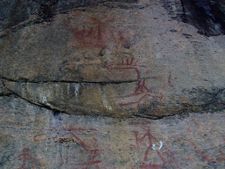
According to archaeological evidence, the area that is Finland was settled around 8500 BCE during the Stone Age as the ice shield of the last ice age receded. The earliest people were probably hunter-gatherers, living primarily off what the tundra and sea could offer. Pottery is known from around the 5300 B.C.E. (see Comb Ceramic Culture). Scientists believe it is probable that speakers of the Finno-Ugric language arrived in the area during the Stone Age (see Finno-Ugric peoples), and were possibly even among the first Mesolithic settlers in Europe.[7] The arrival of the Battle Axe culture (or Cord-Ceramic Culture) in southern coastal Finland around 3200 BCE may have coincided with the start of agriculture. However, the earliest certain records of agriculture are from the late 3rd millennium B.C.E. Hunting and fishing continued to be important parts of the subsistence economy, especially in the northern and eastern parts of the country.
The Bronze Age (1500–500 B.C.E.) and Iron Age (500 B.C.E.–1200 C.E.) were characterized by extensive contacts with other cultures in the Fennoscandian and the Baltic region. First written documents appear in the 12th century.
FInland's history since 1100 has been characterized by its relationships with Sweden to the west and Russia to the east. The beginning of Finland's over 600-year association with the Kingdom of Sweden traditionally dates from the year 1155[8] and the probable introduction of Christianity by Sweden's King Erik after a military expedition known as the First Swedish Crusade. The historically verifiable date of conquest is 1249 when Birger jarl conducted the Second Swedish Crusade to Finland. Swedish became the dominant language of administration and education; Finnish became a language for the peasantry, clergy and local courts in predominantly Finnish-speaking areas. The society was divided in four estates of the realm: nobility, clergy, burghers and peasants, who represented the majority, and the estateless.
In the 16th century the first written works were published in Finnish by Mikael Agricola, and during this time, the Swedish empire (i.e. Sweden and Finland) converted to Lutheranism, the current mainstream religion. The Swedish kingdom settled areas and built the cities of Ingria and Kainuu in Finland. Governor General Per Brahe the Younger founded ten cities and the first university in Finland, the The Royal Academy of Turku. The establishment of universal literacy and rule of law also dates to this time. Finnish people participated in wars of the Swedish kingdom, and Finnish warriors of Sweden's army became known as Hakkapeliittas.
Sweden pursued eastward expansion, only to be engaged by a recently unified Russian. During the 18th century, Russia expanded into Finnish territory and occupied large areas of Finland. Sweden and Russia struggled to gain control of the area that by then was known as Finland. Under Swedish occupation, Finns maintained traditional freedoms; Russia sought to impose the more oppressed life of the Russian peasants on the areas of Finland it controlled. In the 1809 Finnish War, Russia gained the remaining Finnish territory from Sweden. Finland became an Autonomous Gran Duchy of the Russian Empire, which it remained until 1917. The Russian court officially recognized the language and national identity of the Finns, in an attempt to lessen the Swedish influence, which contributed to a growing nationalist sentiment, the Fennoman Movement. This era brought the publication of what became Finland's national epic, the Kalevala, in 1835; the Finnish language achieved equal legal status with Swedish in 1892.
As a Grand Duchy, Finland instituted universal suffrage in 1906, becoming the second country to do so, despite Russian efforts to restrict Finland's autonomy. The members of the four estates in the autonomous legislative assembly, the diet, represented only a small fraction of the population. A reform of the parliamentary system and electoral law gave Finland the first modern representative institution and democracy in the world. Universal and equal eligibility and suffrage was introduced, irrespective of land ownership or gender. Finnish women became among the first in the world to enjoy full political rights, resulting in 19 elected women in the first modern democratic election.[9] After the 1917 Revolution, Finland declared itself independent. In 1918, the fledgling republic was divided by civil war, with the Bolshevik-leaning "reds" supported by the equally new Soviet Union, fighting the "whites", supported by Imperial Germany. The Whites ultimately won and installed a king, a puppet of the German Empire; deep bitterness between the rural peasants and urban working class and the urban and rural bourgeoisie remained. The defeat of Germany in World War I led to the disappearance of Germany's influence; Finland became a republic and elected its first president in 1919. The Finnish-Russian border was formalized, but the relationship between Finland and the Soviet Union remained tense.
World War II brought several battles along the border with German-occupied Soviet Union. Despite unfavorable terms in peace treaties and reparations agreements, Finland mainained its autonomy from the Soviet Union throughout the Cold War era. Finland remains the world's first modern representative democracy. The Parliament of Finland is celebrating its centenary in 2006 and 2007. The 100th anniversary of the approval of the Parliament Act and Election Act by the Diet was on June 1, 2006. May 23, 2007 is the 100th anniversary of the first plenary session of Finland's unicameral parliament. The theme of the centenary is "The right to vote – trust in law. One hundred years of Finnish democracy." The anniversary festivities focus on the parliamentary reform of the early 20th century and the introduction of equal and universal suffrage and full political rights for women. These reforms included the introduction of a proportional representation, open list voting system, and the right to vote and to be elected for all citizens, including women. A total of 19 female MPs were elected in the first election. On May 23, 2006, a statue was unveiled to honour the work of female MPs.

Geography and environment
Finland is a country of thousands of lakes and islands; 187,888 lakes (larger than 5,382 square feet or 500 m²) and 179,584 islands.[10] One of these lakes, Saimaa, is the 5th largest in Europe. The Finnish landscape is mostly flat with few hills and its highest point, the Halti at 4,357 feet (1,328 meters), is found in the extreme north of Lapland at the border between Finland and Norway. Taiga covers 75% of land area with coniferous forests, fens, and little arable land. Granite is uiquitous throughout Finland, visible wherever there is no soil cover. Moraine or till is the most common type of soil, with a thin layer of humus of biological origin. Most of the islands are found in the Archipelago Sea, as part of the archipelago of the Åland Islands, and along the southern coast in the Gulf of Finland. Finland is one of the few countries in the world that is still growing. Owing to the post-glacial rebound that has been taking place since the last ice age, the surface area of the country is growing by about 2.7 square miles each year (7 square kilometers).[11]
Finland has a diverse array of flora and fauna, ranging throughout the various climatic zones. There are over 1,200 species of vascular plant, 800 bryophytes and 1,000 lichen species in Finland, with flora being richest in the southern mainland and Åland Islands. Finland has a relatively new ecology given that many plant species, such as the Scots Pine, spruce, birch and oak, spread throughout Finland from Norway and only reached the western coast less than three millennia ago.
Similarly, Finland has a diverse and extensive range of fauna, that arrived about 10,000 years ago, following the last retreat of the glaciers and re-appearance of vegetation. There are at least 60 native mammals, 248 breeding birds, over 70 fish and 11 reptile and frog species present today, many migrating from neighboring countries thousands of years ago. The Saimaa Ringed Seal, one of only three lake seal species in the world, has become the emblem of the Finnish Association for Nature Conservation and through dedicated work by conservationists this unusual seal been saved from extinction. Due to hunting and persecution in history, many animals such as the Golden Eagle, Brown Bear, and Eurasian Lynx, experienced significant declines in population. However, as a result of careful conservation and the establishment of vast national parks, among other measures, numbers have increased dramatically in recent years.
The climate in Southern Finland is a northern temperate climate. In Northern Finland, particularly in the Province of Lapland, a subarctic climate dominates, characterized by cold, occasionally severe, winters and relatively warm summers. The main factor influencing Finland's climate is the country's geographical position between the 60th and 70th northern parallels in the Eurasian continent's coastal zone, which shows characteristics of both a maritime and a continental climate, depending on the direction of air flow. Finland is near enough to the Gulf Stream in the Atlantic Ocean to explain the unusually warm climate, considering the absolute latitude.
A quarter of Finland's territory lies above the Arctic Circle, and as a consequence the midnight sun can be experienced — for an increasing number of days the farther north one goes. At Finland's northernmost point, the sun does not set for 73 consecutive days during summer, and does not rise at all for 51 days in winter.
Government and politics

Unlike the constitutional monarchies, Denmark, Norway, and Sweden, Finland is a republica with a president and parliament parliamentarism. The president is responsible for foreign policy outside of the European Union. Most executive power lies in the cabinet (the Finnish Council of State) headed by the Prime Minister. According to the Constitution of Finland, the Parliament elects the Prime Minister, who is appointed to office by the President. Other Ministers are appointed by the President on the Prime Minister's proposal. Each minister, and the cabinet as a whole, must have the continuing comfidence of the parliament and may be voted out, resign, or be replaced. The Council of State is made up of the Prime Minister and the ministers for the various departments of the central government as well as an ex-officio member, the Chancellor of Justice. The current President is President Tarja Halonen. She began her first term of office in 2000 and was re-elected on January 29, 2006. Her current term expires in 2012. She is the eleventh President of Finland and the first woman to hold the office.
The 200-member unicameral parliament is called the Eduskunta (Finnish) or Riksdag (Swedish). It is the supreme legislative authority in Finland. Members are elected for a four-year term by direct popular vote under a system of proportional representation. The parliament may alter the Constitution of Finland, bring about the resignation of the Council of State, and override presidential vetoes. Its acts are not subject to judicial review. Legislation may be initiated by the Council of State, or a member of the Eduskunta.
The judicial system of Finland is divided between courts with regular civil and criminal jurisdiction and administrative courts with responsibility for litigation between the individuals and the administrative organs of the state and the communities. Finnish law is codified and its court system consists of local courts, regional appellate courts, and the Supreme Court. The administrative branch of justice consists of administrative courts and the Supreme Administrative Court. In addition to the regular courts, there are a few special courts in certain branches of administration. There is also a High Court of Impeachment for criminal charges (for an offence in office) against the President of the Republic, the justices of the supreme courts, members of the Council of State, the Chancellor of Justice and the Ombudsman of Parliament. The constitution of Finland and its place in the judicial system are unusual in that there is no constitutional court and the supreme court does not have an explicit right to declare a law unconstitutional. In principle, the constitutionality of laws in Finland is verified by a simple vote in the parliament (see Parliamentary sovereignty).
Finland is divided into 6 administrative provinces (lääni, pl. läänit) that are further divided into 90 state local districts. The provincial authority is part of the executive branch of the national government, and has no elected officials. This system was created in 1634, and underwent few major changes until the redivision of the country into "greater provinces" in 1997. Since then, the six provinces have been – referring to the picture on the right:Southern Finland, Western Finland, Eastern Finland, Oulu, Lapland, and Åland. These provinces are merely administrative divisions. Western Finland, for example, spans four major linguistic and dialectal areas (Ostrobothnian dialects, Southwestern dialects, Savo in mideast, and some Swedish speakers in the area around Vaasa).
Black borders refer to municipalities, red to regions.
Finland has two levels of democratic government: the state, and 416 municipalities (as of January 1, 2007). The municipality is the same as a "city" level of government, except that rural municipalities are not called "cities". Since 1977, no legal or administrative distinction is made between towns, cities and other municipalities. Although a municipality must follow the laws set by the state, it makes independent decisions. People often identify with their municipality, although their nationality is usually more important. Municipalities co-operate in 74 sub-regions and 20 regions.
The Åland Islands enjoy a degree of autonomy. According to international treaties and Finnish laws, the regional government for Åland handles some matters that would belong to the provincial authority in Mainland Finland. The same international treaties create an official language for Åland: one must speak Swedish to own land in Åland. The Åland region has a permanent, democratically elected regional council, as a part of its autonomy. In the Kainuu region, there is a pilot project underway, with similar autonomous regional elections.
There are provinces that echo the pattern of colonization of Finland. Dialects, folklore, customs, and people's feeling of affiliation are associated with these historical provinces of Finland, although the re-settlement of 420,000 Karelians during World War II and urbanization in the latter half of the 20th century have made the distinctions less obvious. The old provinces or counties (1634–1997) survive in the telephone numbering areas.
According to Transparency International, Finland has had the lowest level of corruption in all the countries studied in its survey for the last several years.[12]
The Ministry for Foreign Affairs is responsible for Finnish foreign policy which is founded on military non-alliance and neutrality. Finland deepened its participation in the European integration by joining the European Union with Sweden and Austria in 1995. Finland's policy of neutrality is, effectively, "military non-alignment" with an emphasis on maintaining a competent independent defense; military policy is strictly self-defensive. Peacekeeping under the auspices of the United Nations is the only extra-national military responsibility Finland undertakes. Finland is not a member of NATO, but does participate its Partnership for Peace. As a member of the Nordic Council, Finland holds good relations with its Scandinavian neighbors.
As a self-defensive force, Finland's military, the Finnish Defense Force is made up of 34,700 people in uniform (standard readiness strength). All Finnish men, with some exceptions, serve for 6 to 12 months. Women can volunteer for service as well. Finland maintains a large trained reserve force of about 350,000. The defense budget accounts for roughly 1.4% of GDP.
The Ministry of Trade and Industry is responsible for the Government's energy policy. Finland has no fossil fuel resources, but high demand for energy, both due to the cold climate and the nature of its industry. Priority has been placed on increased efficiency of use. Finland also refines imported oil to cover domestic needs: the Finnish corporation Neste Oil has two oil refineries. Finland is connected to the Nordpool, the Nordic electricity market. Finland has developed widespread use of renewable energy resources, most notably wood-based, which accounts for about one-fifth of energy consumption. The pulp and paper industry, the largest industry in Finland, burns its byproducts, such as black liquor residues and waste wood chippings. In fact, a pulp mill is a net energy seller, not buyer. Also, many homeowners own renewed forests, and use wood as an additional (but not primary) heat source. About 7% of electricity is produced from peat harvested from Finland's extensive bogs. Peat is "bioenergy", but there is no consensus whether it is renewable – carbon neutral – or not.
Nuclear power also plays an important role in Finland's energy budget. Finland started planning the introduction of nuclear power in the 1950s. In 2001, 18% of all electricity consumed in Finland was produced by the country's four nuclear power plants.[13] An application to build a fifth power plant led to political controversy. On May 24, 2002, Parliament supported the application by 107 votes to 92. After the vote, the The Green League resigned from the government in protest; all the other parties were divided over the nuclear issue. The fifth nuclear power station is currently under construction by the French Areva.
Economy
Finland has a highly industrialized, largely free-market economy with a per capita output equal to that of other western economies like Sweden, UK, France, and Germany. Services represent the largest sector of the economy. However, with respect to foreign trade, the key economic sector is manufacturing of principally wood, metal, engineering, telecommunications and electronic products. International trade is important, with exports equalling almost one-third of GDP. Except for timber and several minerals, Finland depends on imports of raw materials, energy, and some components for manufactured goods.
In 1991, Finland experienced an economic collapse leading to a severe depression caused by economic overheating, depressed foreign markets, and the dismantling of the barter system between Finland and the former Soviet Union. More than 20% of Finnish trade was with the Soviet Union before 1991, and in the two years following, trade practically ceased. With new debt and economic restructuring in the early 1990s, the economy stabilized. By 1995, the Finnish economy was gowing again and since then the growth rate has been one of the highest of OECD countries. The national debt has been reduced to 41.1% (fulfilling the EU's Stability and Growth Pact requirement).
Because of the northern climate, agricultural development is limited to maintaining self-sufficiency. Forestry, an important export earner, provides a secondary occupation for the rural population.
Finland was one of the 11 countries joining the euro monetary system (EMU) on January 1, 1999. The national currency markka (FIM), in use since 1860, was withdrawn and replaced by euro (EUR) in the beginning of 2002.
Finland has been declared the most competitive country in the world for three consecutive years 2003–2005 (four times in the last five years) by the World Economic Forum.[14] In recent years, Finland has focused resources on innovation and research and development, with special emphasis on information technology.[15] Nokia provides an example of the Finns' success in recognizing the importance of the telecommunications sector.
As of 2005, Finland has a total main road length of 8,238 miles (13,258 km), and is mainly centered on the capital city of Helsinki. There are 48,582 miles (78,186 km) of all public roads; 31,451 miles (50,616 km) are paved. The highway motorway network is still under development, and currently totals 406 miles (653 km). There are 3,644 miles (5,865 km) of railways in the country. Helsinki has an urban rail network, and light rail systems are currently being planned in Turku and Tampere. Finland also has a considerable number of airports and large ports. Helsinki is an optimal location for great circle airline traffic routes between Western Europe and the Far East and provides a stop-over for many international flights.
Tourism is an expanding industry in Finland and has become a significant aspect of its economy in recent years. In 2005, Finnish tourism grossed over US$ 8.9 billion (€6.7 billion) with a 5% increase from the previous year. Much of the sudden growth can be attributed to the globalization and modernization of the country as well as an increase in publicity and awareness. Over 4 million visitors came in 2005. Winter sports are a significant draw, as are summer art and music festivals. Commercial cruises between major coastal and port cities in the Baltic region, including Helsinki, Turku, Tallinn, Stockholm and Travemünde, play a significant role in the local tourism industry.
Demographics
Finland numbers 5,276,571 inhabitants and has an average population density of 44 inhabitants per square mile (17/km²).[1], making it the most sparsely populated country in Europe, after Norway and Iceland. Finland's population has always been concentrated in the southern parts of the country], where the major urban areas are. The biggest and most important of thse cities are the Greater Helsinki metropolitan area (including the cities of Helsinki, Vantaa, Espoo and Kauniainen), and Tampere, Turku, and Oulu.
Since the late 1990s, Finland has received refugees and immigrants at a rate comparable with the other Nordic countries, although the total ethnic-minority population remains far lower in Finland. Finland is ethnically a very homogeneous country; foreigners represent only 2% of the population. Many immigrants originate from the former Soviet Union claiming ethnic (Finnic) kinship.
Finnish is in the Finno-Ugric language family and is typologically an agglutinative language. It modifies and inflects the forms of nouns, adjectives, pronouns, numerals and verbs depending on their roles in the sentence. It is likely that speakers of the Finno-Ugric language arrived in the area during the Stone Age.
The largest minority languages in Finland are Swedish (5.5%), Russian (0.8%) and Estonian (0.3%). To the north, in Lapland, the Sami, numbering less than 7,000, like the Finns, speak a Finno-Ugric language. There are three Sami languages that are spoken in Finland: Northern Sami (majority), Inari Sami (300–400 people) and Skolt Sami (400 people). The Sami live in Finland, Sweden, Norway, and Russia. Known widely in the past as Lapps, a term now considered derogatory by many Sami. In addition to their own Sami languages, Sami have their own way of life and identity. Common history, traditions, livelihoods, and customs unite the Sami living in different countries. In total, there are about 75,000 to 100,000 Samis, fewer than 7,000 living in Finland, forming roughly 0.13% of the population.
The majority of Finns are also proficient in English, learned in school and from media. Other common secondary languages are German, French, and Swedish.
Swedish has an official language status in Finland, and the right of other minority groups (in particular Sami people) to cherish their culture and language is protected by law. Over 20 languages are now spoken in Finland by immigrant groups of significant size — that is, with at least a thousand speakers.
Most Finns are members of the Evangelical Lutheran Church of Finland (82.4%)[16], with a minority of 1.1% belonging to the Finnish Orthodox Church (see Eastern Orthodox Church). The remainder of the population consists of small groups (totaling 1.1%) of other Protestant denominations, Catholics, Muslims and Jews beside the growing population of unaffiliated (15.4%)[17]. The main Lutheran and Orthodox churches are the official churches of Finland. However, church attendance is much lower than these figures may suggest. Most of the population holds generally secular views. A majority of members of the state Lutheran Church do not participate actively, and even then it is mostly for occasions like weddings and funerals.[18]
Finnish family life is centered around the nuclear family. Relations with the extended family are often rather distant, and Finnish people do not form politically significant clans, tribes, or similar structures. According to UNICEF, Finland ranks fourth in child well-being.[19]
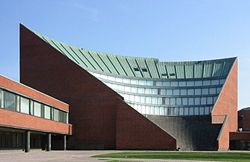
The Finnish education system is a comparatively egalitarian Nordic system, with no tuition fees for full-time students. Attendance is compulsory between the ages of 7 and 16, and free meals are served to pupils at primary and secondary levels. Secondary education is not compulsory; students opt for either a trade school, or preparation for tertiary education. In higher education, there are two mostly separate sectors: the higher vocational schools and universities. In the OECD's international assessment of student performance, PISA, Finland has consistently been among the highest scorers; in 2003, Finnish 15-year-olds were first in reading literacy, science, and mathematics; and second in problem solving, worldwide. The World Economic Forum ranks Finland's higher education first in the world.[20]
Finland has a public health care system. 18.9% of health care is funded by households themselves, 76.6% is publicly funded, and the rest of the funding comes from elsewhere. There are 307 residents for each doctor.[21] After having one of the highest death rates from heart disease in the world in the 1970s, improvements in the Finnish diet and exercise have paid off. Finland is now one of the healthiest countries in the world.[22]
The life expectancy is 82 years for women and 75 years for men.
Culture
Finland is also a place rich in culture for history, tradition and religion. There are churches and cathedrals scattered all across Finland reflecting the strong Finnish Lutheran following. There are also museums and examples of ancient architecture remaining from the reign of the Swedish Empire over much of Finland. Castles,some converted to museums, from the Swedish reign are found, for example in Turku, Hämeenlinna, Savonlinna. Olavinlinna in Savonlinna hosts the annual Savonlinna Opera Festival. The city of Helsinki, on the other hand, is famous for its Grand Duchy era architecture, resembling that of imperial St. Petersburg.
Since its earliest contact with foreign peoples and monarchs, Finns have accepted influences from Western Europe (particularly Sweden and Germany) and, more recently, North America into their indigenous culture. (There are very few Russian influences, with the exception of the 1.1% Orthodox minority.) The concept of Finnishness, however, persists as a national identity and traditional characteristics and customs. There are still differences among regions, especially minor differences in accents and vocabulary. Minorities maintain their own cultural characteristics, such as the Sami and Finland Swedes. Many Finns are emotionally connected to the countryside and nature, as urbanization is a relatively recent phenomenon.
Much of the music of Finland is influenced by Karelian traditional tunes and lyrics, as comprised in the Kalevala. Karelian culture is perceived as the purest expression of the Finnic myths and beliefs, reflecting Finland's position between the East and the West. Finnish folk music has undergone a roots revival in recent decades, and has become a part of popular music. The Sami of northern Finland have their own musical traditions as well. Jean Sibelius is perhaps the most well-known of finnish classical composers.
Modern Finnish popular music includes a renowned heavy metal scene, like other Nordic countries, as well as a number of prominent rock bands, jazz musicians and hip hop performers. Iskelmä (coined directly from the German word Schlager, meaning hit) is a traditional Finnish word for a light popular song. Finnish popular music also includes a large amount of opera and various kinds of dance music; tango, a style of Argentinean music, is also popular. Most recently, the Finnish hard rock/heavy metal band Lordi won the 2006 Eurovision Song Contest. The song they used was the controversial "Hard Rock Hallelujah" and they celebrated the victory with a free concert in the Market Square in Helsinki, Finland, on May 26, 2006.
Finland has a growing film industry with a number of famous directors such as Aki Kaurismäki, Timo Koivusalo and actors such as Mikko Leppilampi. Hollywood film director/producer Renny Harlin was born in Finland.
Finland is one of the most advanced information societies in the world. There are 200 newspapers; 320 popular magazines, 2,100 professional magazines and 67 commercial radio stations, of which one nation-wide channel; three national public service radio channels in Finnish, and two in Swedish; a radio network in the Sami language, three digital radio channels; four national television channels, of which two public service and two commercial channels; five digital public service television channels and three commercial; 12 feature films each year; 12,000 book titles annually and 12 million records sold each year, comparatively rich for a population of 5.2 million in a land of 67% Internet penetration.[23]
The people of Finland are well prepared to use high technology and information services. The number of cellular phone subscribers and Internet connections per capita in Finland are among the highest in the world. According to the Ministry of Transport and Communications, by August 1998 Finland was the first country in the world to exceed 50% mobile phone penetration. By December 1998, the number of cell phone subscriptions outnumbered fixed-line phone connections. By the end of 2005, there were 5.38 million cellular phone subscribers, or 103% of the population.[24]
Another fast-growing sector is the use of the Internet. According to the Ministry of Transport and Communications, Finland had more than 1.3 million Internet connections by the end of 2005, i.e., about 250 per 1,000 inhabitants. The Finns are also heavy users of Internet services. All Finnish schools and public libraries are connected to the Internet.
Traditional Finnish cuisine is a combination of European, Fennoscandian and Western Russian elements; table manners are European. The food is generally simple, fresh, and healthy. Fish, meat, berries and root vegetables are typical ingredients whereas spices are not common due to their unavailability in the early days. Traditionally, Finnish food varied from region to region, most notably between the west and east. In coastal and lakeside villages, fish was one main feature of cooking, whereas in the eastern and also northern regions, vegetables and reindeer were more common.
Official holidays in Finland are established by acts of Parliament. The official holidays can be divided into Christian and secular holidays, although some of the Christian holidays have replaced holidays of pagan origin. The main Christian holidays are Christmas, Epiphany, Easter, Ascension Day, Pentecost, and All Saints Day. The secular holidays are New Year's Day, May Day, Midsummer Day, and Independence Day.
In addition, all Sundays are official holidays but not as important as the special holidays. The names of the Sundays follow the liturgical calendar and can be categorized as Christian holidays. When the standard working week in Finland was legislatively reduced to 40 hours, all Saturdays became de facto public holidays, though not official ones. Retail stores are prohibited by law from doing business on Sundays, except during the summer months (May through August) and in the pre-Christmas season (November and December). Business locations that have less than (400 square meters) of floor space are allowed Sunday business throughout the year, with the exception of official holidays and certain Sundays, such as Mother's Day and Father's Day.
Sport is popular in Finland and many Finnish people regularly visit different sporting events. Some of the most popular recreational sports and activities include floorball, a variation on field hockey and ice hockey played indoors, Nordic walking, running, and skiing. Pesäpallo (reminiscent of baseball) is the national sport of Finland, although the most popular sport in Finland in terms of television viewers and media coverage are ice hockey and Formula One. The Finnish ice hockey team is considered one of the best in the world. During the past century, Finland and Sweden have been rivals, mostly in ice hockey and athletics (Finnkampen). Football is also very popular in Finland, though their national football team has never qualified for the World Cup or the European Championships Finals Tournament.
Some of the most outstanding athletes from the past include Hannes Kolehmainen (1890–1966), Paavo Nurmi (1897–1973) and Ville Ritola (1896–1982), who between them won 25 Olympic medals in track (18 gold and 7 silver medals). They were the first of a generation of great Finnish long distance runners often named the "Flying Finns". Another long distance runner, Lasse Virén (b. 1949), won 4 gold medals in the 1972 and 1976 games. Well known alpine skiing winners are World Champion Kalle Palander and Olympian Tanja Poutiainen. Finland is also the home of Kimi Räikkönen and Mika Häkkinen who are both well-known in Formula One. Historically, Finland has produced the worlds best rally drivers with ex-world champion drivers Ari Vatanen, Hannu Mikkola, Juha Kankkunen, Tommi Mäkinen and Marcus Grönholm, among others.
Facts and figures
Miscellaneous
- According to the World Audit study, Finland is the least corrupt and most democratic country in the world as of 2006.[25]
- In the PISA study, Finland has ranked at the top in education; the study measured the skills of 15-year-olds in topics relevant to everyday life.
- Finland has been at the top of the worldwide Press Freedom Ranking list every year since the publication of the first index by Reporters Without Borders in 2002.[26]
- Finland is home to the world's leading mobile phone company, Nokia.
- Cellular technology: GSM/GPRS/EDGE/UMTS.
- Cellular frequency: GSM 900, GSM 1800, UMTS 2100
- The currency is euro, abbreviated €, e, or eur, divided into 100 sentti, abbreviated snt (see also: Finnish euro coins). The smallest coin actively used is 5 cent; 1 and 2 cent euro coins are not used.
- Voltage: 230V, 50 Hz
- Power connector, unearthed: Type C (European 2-pin) – for more details, see CEE 7/16 (Europlug 2.5 A/250 V unearthed)
- Power connector, earthed: Type F (German 2-pin round, side clip earth) – for more details, see CEE 7/4 (German "Schuko" 16 A/250 V earthed)
- Postal code: 5 digits.
- Date format: DD.MM.YYYY (ex. 1.12.2007), DD.MM.YY (ex. 1.12.07) or DD.MM. (ex. 1.12.). Dates written out are written DD. MMta YYYY (e.g. 1. joulukuuta 2007), where the partitive case -ta must be used for months. Month names are never abbreviated (use numerical date instead).
- The first day of the week is Monday, and the weekdays are maanantai, tiistai, keskiviikko, torstai, perjantai, lauantai, sunnuntai. Weekday names are not capitalized and may be abbreviated with the two first letters (i.e. ma, ti, ke, to, pe, la, su).
- The Gregorian calendar is used. Week numbers are commonly used in businesses and institutions.
- Decimal separator is a comma: 123,45
- Thousands are (optionally) separated by a space: 10 000
- Currency sign is placed after the digits, with a space as a mandatory separator: 10 €
- Percent sign is placed after the digits, with a separating space: 10 %
- The Finnish alphabet includes no accented letters, but the additional letters Ä and Ö are used in Finnish. In some rare instances, one also needs the letters Š and Ž. Furthermore, Å is used in Swedish, and is included in the Finnish alphabet.
- The Finnish QWERTY keyboard layout is shared with Swedish. A demo version of a new keyboard layout, which is meant to help typing accented characters, was released in Summer 2006.
International rankings
- This list contains a maximum of three years per survey. For a more complete list, see International rankings of Finland.
| Organisation | Survey | Year | Ranking |
|---|---|---|---|
| A.T. Kearney / Foreign Policy |
Globalization Index | 2004 2005 |
Rank 5 out of 62 countries Rank 10 out of 62 countries |
| Columbia University / Yale University |
Environmental Sustainability Index | 2001 2002 2005 |
Rank 1 out of 122 countries Rank 1 out of 142 countries Rank 1 out of 146 countries |
| Heritage Foundation / The Wall Street Journal |
Index of Economic Freedom | 2006 | Rank 12 out of 157 countries |
| IMD International | World Competitiveness Yearbook | 2004 2006 |
Rank 8 out of 60 economies (countries and regions) Rank 10 out of 61 economies |
| NationMaster | Technological Achievement | 2001 | Rank 1 out of 68 countries |
| OECD, PISA | Programme for International Student Assessment |
2000 2003 |
Rank 1 of 43 countries in reading performance. Out of 41 countries: rank 2 in mathematics, rank 1 in reading literatucy, rank 1 in science (tied with Japan), rank 2 in problem solving |
| Reporters Without Borders | World Press Freedom Ranking | 2004 2005 2006 |
Rank 1 out of 167 countries (tied with Denmark, Iceland, Ireland, Netherlands, Norway, Slovakia and Switzerland) Rank 1 out of 167 countries (tied with Denmark, Iceland, Ireland, Netherlands, Norway and Switzerland) Rank 1 out of 168 countries (tied with Iceland, Ireland and Netherlands) |
| Save the Children | State of the World’s Mothers | 2004 2005 2006 |
Rank 2 out of 119 countries (tied with Denmark) Rank 3 out of 109 countries Rank 2 out of 125 countries (tied with Denmark) |
| Transparency International | Corruption Perceptions Index | 2004 2005 2006 |
Rank 1 out of 146 countries Rank 2 out of 158 countries (tied with New Zealand) Rank 1 out of 163 countries (tied with Iceland and New Zealand) |
| UNDP | Human Development Index | 2004 2005 2006 |
Rank 13 out of 177 countries Rank 13 out of 177 countries Rank 11 out of 177 countries |
| World Economic Forum | Global Competitiveness Report | 2005–2006 2006–2007 |
Growth Competitiveness Index Ranking – Rank 1 out of 117 countries Growth Competitiveness Index Ranking – Rank 2 out of 125 countries |
| WorldAudit.org | World Democracy Audit | 2006 | Rank 1 out of 150 countries |
See also
- Lists
- List of cities and towns in Finland
- List of Finns
- List of Finnish companies
- List of Finnish television stations
- List of newspapers in Finland
- List of universities in Finland
- List of bands from Finland
- List of Finnish wars
- History
- History of Finland
- Finlandization
- Politics
- Foreign relations of Finland
- Military of Finland
- Gun politics in Finland
- Infrastructure
- Education in Finland
- Communications in Finland
- Crime in Finland
- Transport in Finland
- Fire fighting in Finland
- Culture and sports
- Cuisine of Finland
- Music of Finland
- Football in Finland
- Other
- Protected areas of Finland
- Tourism in Finland
ReferencesISBN links support NWE through referral fees
- ↑ 1.0 1.1 Suomen ennakkoväkiluku joulukuun lopussa 5 276 571 (Finnish). Statistics Finland, December 2006. Retrieved 2007-01-22.
- ↑ The population of Finland. Population Register Center. Retrieved 2007-01-22.
- ↑ Human Development Report. United Nations Development Program. Retrieved 2007-01-29.
- ↑ Psychologist Produces The First-ever 'World Map Of Happiness'. Science Daily (2006-11-14). Retrieved 2007-01-29.
- ↑ National Archives Service, Finland (English). Retrieved 2007-01-22.
- ↑ The Rock paintings of Astuvansalmi at Ristiina. UNESCO World Heritage Centre. Retrieved 2007-01-23.
- ↑ Prehistory. Virtual Finland (Ministry for Foreign Affairs of Finland). Retrieved 2007-01-22.
- ↑ Finland at a glance. Virtual Finland (Ministry for Foreign Affairs of Finland). Retrieved 2007-01-22.
- ↑ One hundred years of Finnish democracy (PDF). Finnish Parliament. Retrieved 2007-01-22.
- ↑ Statistics Finland. Retrieved 2007-01-22.
- ↑ Trends in sea level variability. Finnish Institute of Marine Research (2004-08-24). Retrieved 2007-01-22.
- ↑ Global Corruption Report. Transparency International. Retrieved 2007-01-22.
- ↑ Energy Consumption in 2001 (PDF). Statistics Finland. Retrieved 2007-01-22.
- ↑ Global Competitiveness Report. World Economic Forum. Retrieved 2007-01-22.
- ↑ Virtual Finland (Ministry for Foreign Affairs of Finland). Retrieved 2007-01-22.
- ↑ Kirkon väestötilastot tarkentuneet – Suomalaisista 82,4 prosenttia kuuluu luterilaiseen kirkkoon (Finnish). Evangelical Lutheran Church of Finland (2007-02-19). Retrieved 2007-02-19.
- ↑ Finland in Figures. Statistics Finland. Retrieved 2007-01-22.
- ↑ International Religious Freedom Report 2004. U.S. Department of State (2004-09-15). Retrieved 2007-01-22.
- ↑ Child poverty in perspective: An overview of child well-being in rich countries (PDF). UNICEF Innocenti Research Centre. Retrieved 2007-02-14.
- ↑ The Global Competitiveness Report 2006–2007: Country Highlights. World Economic Forum. Retrieved 2007-01-22.
- ↑ Health (2004). Statistics Finland. Retrieved 2007-01-22.
- ↑ Fat to fit: how Finland did it. Guardian Unlimited (2005-01-15). Retrieved 2007-01-22.
- ↑ The Finnish Media: outlets increase, audiences diversify. Virtual Finland (Ministry for Foreign Affairs of Finland). Retrieved 2007-01-22.
- ↑ Suomalaisilla on 5,4 miljoonaa matkapuhelinliittymää (Finnish). Digitoday.fi (2006-04-26). Retrieved 2007-01-22.
- ↑ Finland: World Audit Democracy Profile. WorldAudit.org. Retrieved 2007-01-22.
- ↑ Worldwide Press Freedom Index 2006. Reporters Without Borders. Retrieved 2007-01-22.
Further reading
- Jason Lavery – The History of Finland (The Greenwood Histories of the Modern Nations), Greenwood Press 2006 (ISBN 0-313-32837-4) (ISSN 1096-2905)
- Deborah Swallow – Culture Shock! Finland: A Guide to Customs and Etiquette (ISBN 1-55868-592-8)
- Richard D. Lewis – Finland: Cultural Lone Wolf (ISBN 1-931930-18-X)
- Max Jakobson – Finland in the New Europe (ISBN 0-275-96372-1)
- William R. Trotter – A Frozen Hell: The Russo-Finnish Winter War of 1939-1940 (ISBN 1-56512-249-6)
- Eino Jutikkala, Kauko Pirinen – A History of Finland (ISBN 0-88029-260-1)
- Chris Mann – Hitler's Arctic War: The German Campaigns in Norway, Finland, and the USSR 1940-1945 (ISBN 0-312-31100-1)
- Insight Guide: Finland (ISBN 981-4120-39-1)
- Matti Klinge – Let Us Be Finns: Essays on History (ISBN 951-1-11180-9)
- Lonely Planet: Finland (ISBN 1-74059-791-5)
- Fred Singleton – A Short History of Finland (ISBN 0-521-64701-0)
- Allen F. Chew – The White Death: The Epic of the Soviet-Finnish Winter War (ISBN 0-87013-167-2)
- Eloise Engle and Lauri Paananen – The Winter War: The Soviet Attack on Finland 1939-1940 (ISBN 0-8117-2433-6)
- Jean-Jacques Subrenat – Listen, there's music from the forest (ISBN 952-92-0564-3)
External links
- Government
- The Finnish Government – Official governmental site
- The President of Finland – Official site of the President of the Republic of Finland
- Parliament of Finland – Official Parliamentary site
- Finland's EU Presidency – Official site of Finland's EU presidency (June 1, 2006 – Dec 31, 2006)
- Parliament's Centennial – 100 years of Finnish democracy – Finnish Parliament celebrates its centennial in 2006–2007
- Overviews
- Statistics Finland – Finland in Figures
- Encyclopædia Britannica Online – Finland's country page
- International English Speakers' Association of Finland ry – Events and information for English speakers in Finland
- Maps & Tourism
- WikiMapia [1] and Google Maps [2] satellite view of Finland
- Virtual Finland – Main portal to Finland (administered by the Ministry for Foreign Affairs of Finland)
- Visit Finland – The official travel and tourism guide by the Finnish Tourist Board
- Helsinki.fi – Capital of Finland's city portal
- Today's weather by the Finnish Meteorological Institute
- Other
| Geographic navigations |
|---|
Countries of Europe
Albania · Andorra · Armenia2 · Austria · Azerbaijan1 · Belarus · Belgium · Bosnia and Herzegovina · Bulgaria · Croatia · Cyprus2 · Czech Republic · Denmark3 · Estonia · Finland · France3 · Georgia1 · Germany · Greece · Hungary · Iceland · Ireland · Italy · Kazakhstan1 · Latvia · Liechtenstein · Lithuania · Luxembourg · Republic of Macedonia · Malta · Moldova · Monaco · Montenegro · Netherlands3 · Norway3 · Poland · Portugal · Romania · Russia1 · San Marino · Serbia · Slovakia · Slovenia · Spain3 · Sweden · Switzerland · Turkey1 · Ukraine · United Kingdom3 · Vatican City 1 Has majority of its territory in Asia. 2 Entirely in Asia but having socio-political connections with Europe. 3 Has dependencies or similar territories outside Europe.
|
| Others |
|---|
| Template:Finno-Ugric-speaking nations
Template:Germanic Europe |
Credits
New World Encyclopedia writers and editors rewrote and completed the Wikipedia article in accordance with New World Encyclopedia standards. This article abides by terms of the Creative Commons CC-by-sa 3.0 License (CC-by-sa), which may be used and disseminated with proper attribution. Credit is due under the terms of this license that can reference both the New World Encyclopedia contributors and the selfless volunteer contributors of the Wikimedia Foundation. To cite this article click here for a list of acceptable citing formats.The history of earlier contributions by wikipedians is accessible to researchers here:
The history of this article since it was imported to New World Encyclopedia:
Note: Some restrictions may apply to use of individual images which are separately licensed.


